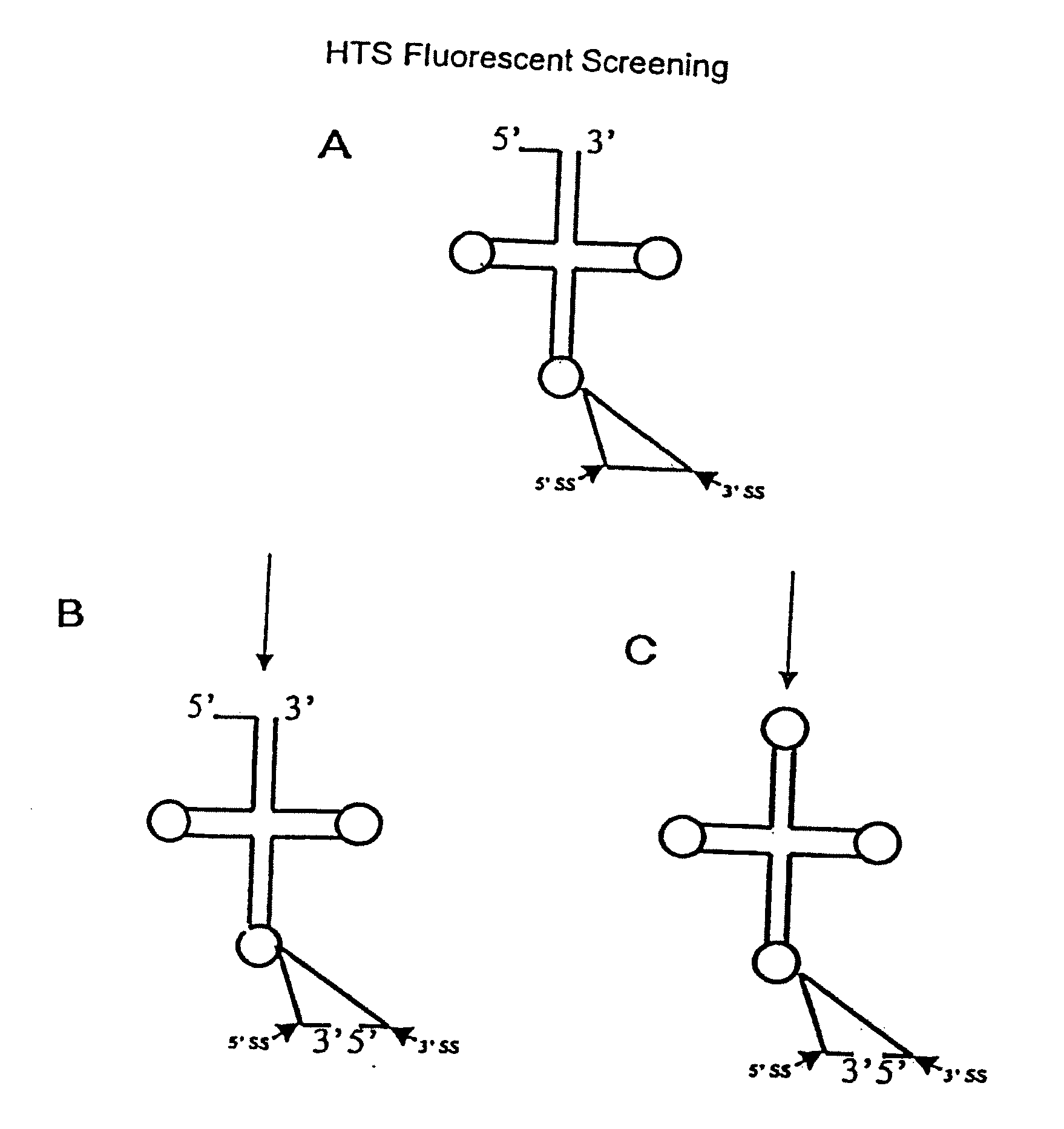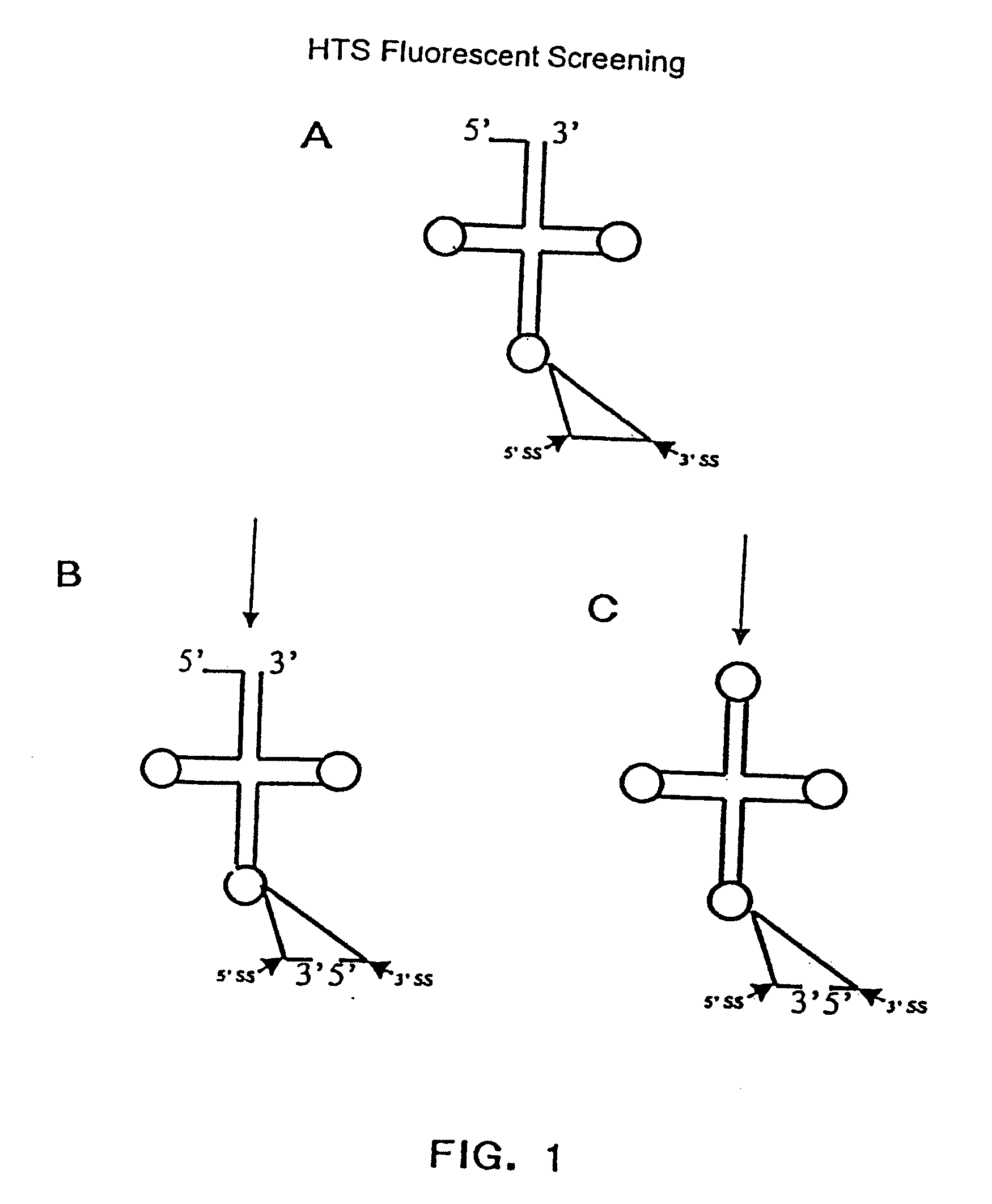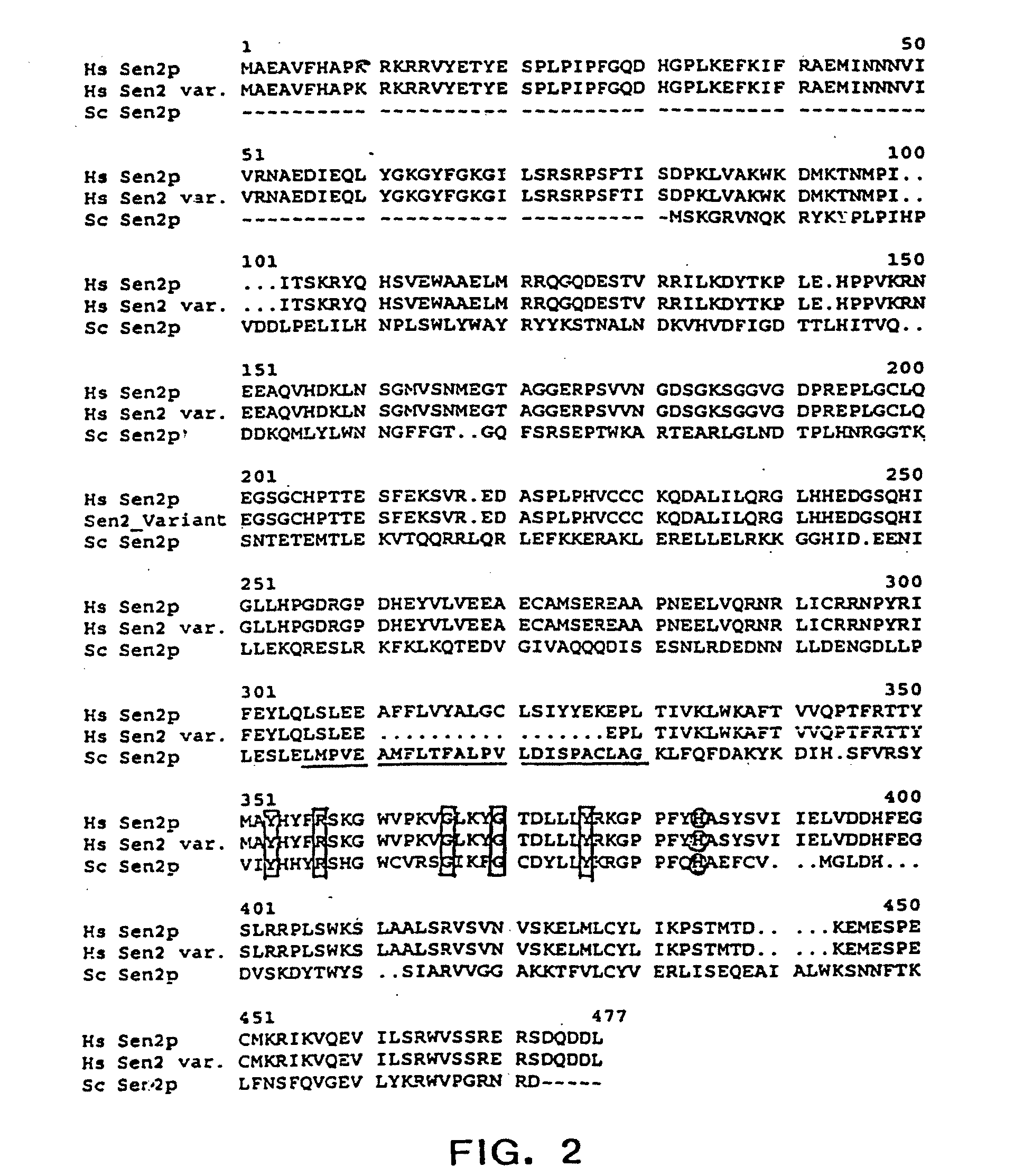TARGETING ENZYMES OF THE tRNA SPLICING PATHWAY FOR IDENTIFICATION OF ANTI-FUNGAL AND/OR ANTI-PROLIFERATIVE MOLECULES
a technology which is applied in the field of targeting enzymes of the trna splicing pathway for identification of antifungal and/or antiproliferative molecules, can solve the problems of radiation therapy often eliciting serious side effects, surgery might not completely remove the neoplastic tissue, and the applicability of surgery poses significant drawbacks for patients, so as to prevent or reduce the fluorescence of the joined
- Summary
- Abstract
- Description
- Claims
- Application Information
AI Technical Summary
Benefits of technology
Problems solved by technology
Method used
Image
Examples
Embodiment Construction
[0114]The present invention provides methods of identifying compounds that affect the activity of one or more components of the tRNA splicing pathway. In particular, the invention provides methods for identifying compounds that modulate the activity of an animalia and / or fungal tRNA splicing endonuclease and / or an animalia and / or fungal tRNA splicing ligase. Examples of assays which can be used to identify compounds that modulate the activity of an animalia and / or fungal tRNA splicing endonuclease and / or an animalia and / or fungal tRNA splicing ligase include, but are not limited to, reporter-based assays, FRET assays, fluorescence polarization assays and FISH assays. Such assays either directly or indirectly assess the effect of a compound on an animalia and / or fungal tRNA splicing endonuclease and / or an animalia and / or fungal tRNA splicing ligase. Compounds identified as modulating the activity of the endonuclease or ligase are preferably tested for their specificity for the endonu...
PUM
| Property | Measurement | Unit |
|---|---|---|
| molecular weight | aaaaa | aaaaa |
| half life | aaaaa | aaaaa |
| pH | aaaaa | aaaaa |
Abstract
Description
Claims
Application Information
 Login to View More
Login to View More - R&D
- Intellectual Property
- Life Sciences
- Materials
- Tech Scout
- Unparalleled Data Quality
- Higher Quality Content
- 60% Fewer Hallucinations
Browse by: Latest US Patents, China's latest patents, Technical Efficacy Thesaurus, Application Domain, Technology Topic, Popular Technical Reports.
© 2025 PatSnap. All rights reserved.Legal|Privacy policy|Modern Slavery Act Transparency Statement|Sitemap|About US| Contact US: help@patsnap.com



